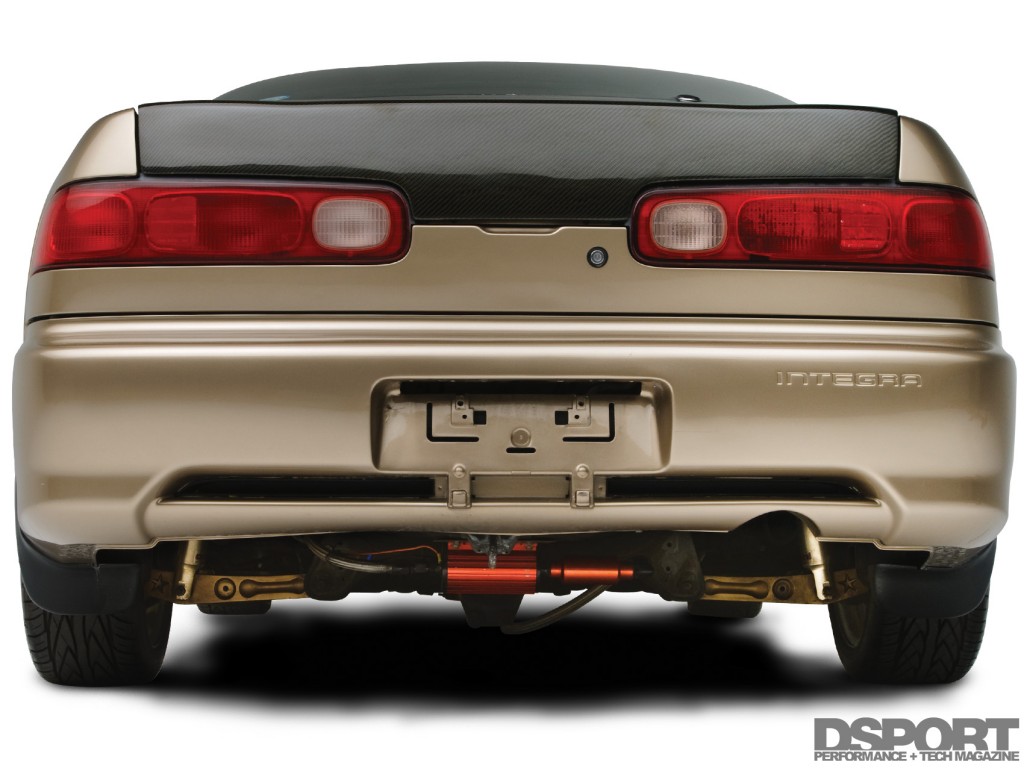GT4294R Turbo – Is this Monster too big?
Turbocharger sizing makes all the world of difference when it comes to power production and delivery. With too small a turbo, the engine delivers amazing response with limited power. Sized too big, response can be nonexistant until the boost finally kicks in and the engine rocks to redline only to drop out of boost on the gear shift. It can be a great 1000RPM powerband for a dyno contest, but far from practical for any other use.
A T4/T3-hyrbid sized for a peak power of around 350 horsepower on pump gas was the hot ticket for the street 15 years ago on a B-series. Today, turbochargers with twice that power capacity are sometimes found on turbo B-series engines. Most of the time, it’s for dedicated drag cars, but cometimes a street enthusiasts will “go big” to stand out from the crowd. While big turbos do trade off response with all other factors being equal, who says that you have the leave them equal. Increasing the engines displacment and using the right camshaft combination can definitely help. Likewise, twin-scroll turbine housings and ball-bearing designs can also improve response. For this Integra, the B18A was bored from 81mm to 84mm, increasing the displacement of the engine by 138.4cc (a 7.5% increase) and now features a VTEC (variable valve timing and lift electronic control) cylinder head from a B16 engine. In addition, the GT4294R turbo features a twin-scroll design.
Transfer Of Power
High power is great, but without driveline and chassis preparations, it can all end up in smoke. A Clutch Masters FX700 clutch transmits power to the input shaft of a JDM Integra Type-R transmission. The JDM Type-R came factory equipped with a helical limited-slip differential and more aggressive gearing for better acceleration. With low elapsed times and fast traps as the objective, a drag suspension setup became the focus. A set of OMNI POWER drag dampers and springs suspend the chassis and keep the weight over the drive wheels, while traction bars reinforce the lower control arms to eliminate traction-losing wheel hop.
Launch Control: Building the Boost
Getting a big turbo up on boost for the launch usually requires a “two-step” or antilag system. Having the proper combination of RPM and boost is critical to the quickest 60-foot times. A two-step or Launch Control provides a secondary rev limiter that activates when the clutch pedal or external switch is activated. This allows the driver to push the throttle to the floor while maintaining the desired launch RPM while the boost builds. At the green light, the clutch can be side stepped with the throttle to the floor, resulting in consistent launches race after race. The normal rev limiter at redline then takes back over again to protect the engine after the launch.
Big Plenum, Big Plus?
Intake manifold design has a measurable effect on the power curve. Just as turbo sizing is application specific, so is plenum size, runner size and runner length. All other factors being equal, longer runners tend to produce more low-end, while shorter runners tune the peak power RPM up in the powerband. Since this engine was built for drag racing, low-end performance was traded for peak horsepower production with the JG Edelbrock VictorX intake manifold. In our testing, this manifold is best suited for B-series engines over 2.0-liters only. On smaller engines, this big manifold may not offer any gains.
Proven On The Street And Strip
A vast number of street encounters end with shock and awe as the Integra pulls away. But on the drag strip, delivering competitive times and traps makes the build effort and expense truly worth while. In its first trip to the drag strip, Chuy’s gold Integra managed a 10.43-second pass. Since the car was built for the street and lacked proper safety gear, the Integra was promptly dismissed from the track. But to Chuy, it was all worthwhile. He comments, “My little gold digger has set me back some money, but the investment was well worth it. Having a daily-driveen Integra with a GT42R under the hood really gives my car its own identity. What made this build even more meaningful is having friends that shared their knowledge and helped out with the build.”




